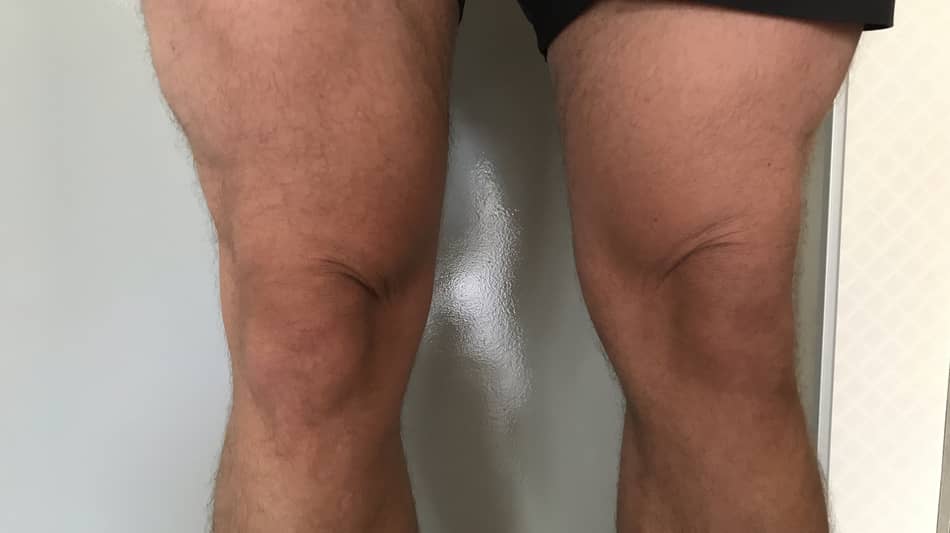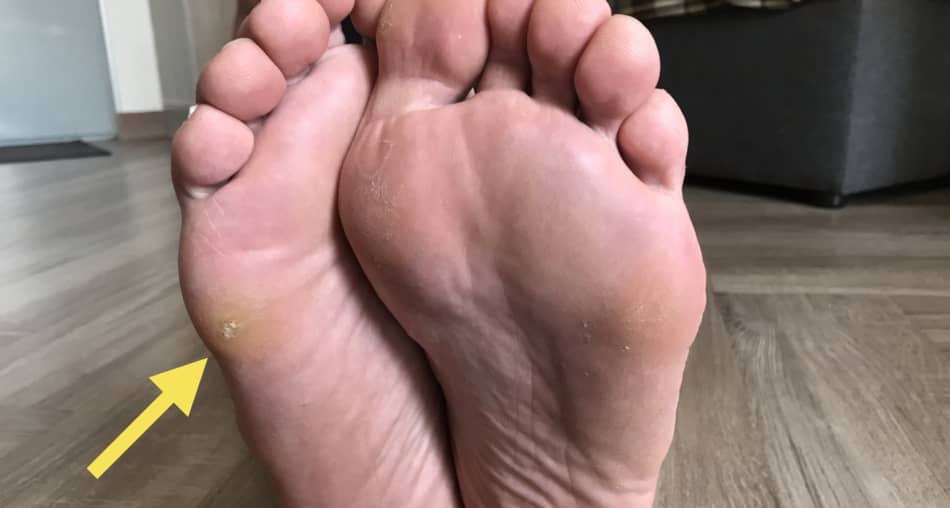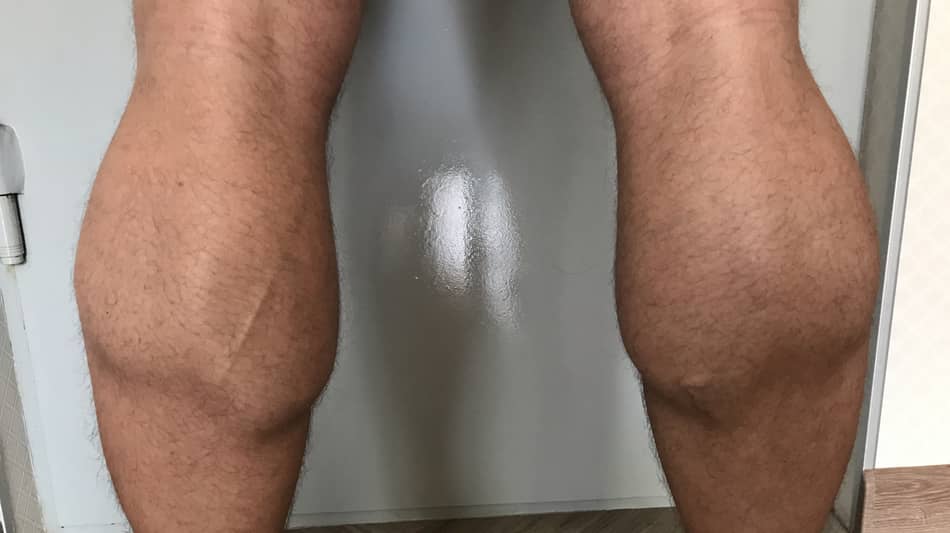The imbalance in leg muscle soreness, where one leg feels more sore than the other, can often be attributed to factors like leg length discrepancy. Research shows that a leg length discrepancy of 0.5–1.5 cm is present in about 32% of the population, as highlighted by Dr. Anna-Lisa Hellsing from the Department of Rehabilitation, University Hospital, Uppsala, Sweden.
The reason why one leg is more sore than the other is due to the difference in leg length, which can lead to pelvic torsion and gait asymmetry, causing muscular imbalances and increased soreness in one leg.
For many months I’ve struggled with uneven muscle soreness and I couldn’t figure out why one leg is more sore than the other after my workouts. Today (after months of training, physical therapy treatments, and consultations) I put together all the information about muscle imbalance and help you understand if is it normal for one leg to be sorer than the other after exercise, running, or squats.

Why Is One Leg More Sore Than The Other?
One leg being more sore than the other after a workout is typically due to muscular asymmetry. This imbalance in muscle strength and flexibility can develop when individuals favor or are compelled to use one leg more frequently, resulting in uneven soreness. A primary reason for this disparity in post-exercise soreness is bilateral muscular imbalance.
Muscle imbalance means the muscles in the dominant leg are more active during certain exercises, compared to muscles in the weaker leg. For example, you may notice that doing 10 reps of bilateral step-ups on one side feels semi-challenging, whereas doing the same 10 reps of step-ups on the other leg feels like you’re reaching muscle failure (which is exactly what happens with me).
The most common places where muscle imbalances occur and affect are the hips, shoulders, and knees. Bilateral muscular imbalance is common, especially among people who use a dominant side more than their weaker side:
- Military personnel: Carrying heavy equipment on one side more than the other.
- Office workers: Remaining in a seated position for an extended time can create muscle imbalances in the hips.
- Professional athletes: Athletes who use one side more than the other for their sports (e.g. tennis players, soccer players, golf players, figure skaters).
As you can imagine, differences in strength between the two legs can lead to injury and lower back pain, and it can be the reason why you’re putting more weight on one leg while squatting, running, or jumping.
Why Do Some Muscles Get More Sore Than Others?
Some muscles get more sore than others because of the difference in muscle tension caused by poor posture, prolonged sitting, and/or asymmetry in movement. Differences in muscular tension lead to bilateral asymmetry of muscle strength and body compensation.
Also, uneven muscle soreness is due to repetitive movements where you’re leaning on one leg more than the other, as well as holding an incorrect posture for a long time. This creates an asymmetry between the agonist and antagonist muscles.
(Here’s a good example)
The first time I noticed that my muscles were uneven was a long time ago during the massage treatment. My massage therapist told me that my quads feel more sore in my left leg than in my right. Thinking back, the reason why one of my legs was more sore than the other was because of the ashtanga yoga where I’ve always done the right side first.
Ashtanga yoga requires you to hold the asana for 5 – 10 breaths on each side, however, as far as I remember, I never did them equally. After months of practice, I’ve noticed that my body started to shift the weight towards the right side more (see the picture below).

As you can see in the picture of my feet, after several months of uneven stretching (which was the dumbest thing I’ve ever done), I developed calluses only on my right foot.
This was because my body compensated and put more weight on the right leg.
As you can imagine, this translated not only into my yoga practice but also into running, working out, and even walking. After I discovered my calluses, I booked an appointment with a physiotherapist to have a look at my posture (more on that later).
What to do if one muscle is more sore than the other?
The best thing you can do if one of your muscles is more sore than the other is to contact a licensed physiotherapist for an assessment. An experienced physical therapist is the best person to find the muscle imbalance and give you exercises that will target those imbalances.
Another reason why one of your legs feels more sore than the other is because the long bones of the human lower limb usually show lateral asymmetries of length.
Why Does One Leg Hurt More Than The Other?
One of the reasons why one leg hurts more than the other is because of the leg length discrepancy, which causes the pelvis and sacrum to tilt to the side of the short leg. The difference in the pelvis position results in gait asymmetry, which can lead to muscular imbalance and uneven leg muscle soreness.
Below you can see the picture of my legs from the posterior view.

As you can notice, my right knee is much higher than my left knee. Also, my right calf muscle is slightly bigger than my left.
The difference in the leg length goes hand in hand with the rotation of the pelvis, often called pelvic torsion (pelvic torsion means that one side of the hip is more rotated than the other).
According to my physiotherapist, the difference in the leg length is not significant to cause any risks or long-term complications.
However, this is enough to give me muscle imbalance and make one of my legs more sore than the other after running or working out.
For the record, leg length discrepancy is common. According to a 1988 study by Dr. Anna-Lisa Hellsing from the Uppsala University Hospital in Sweden published in Upsala Journal of Medical Sciences, a leg length discrepancy of 0.5–1.5 cm was present in one-third (32%) of the population.
Why Is My Left Leg More Sore Than My Right?
Your left leg is more sore than your right because of the muscle imbalance. Holding an incorrect posture, as well as asymmetry in muscular strength puts more pressure on the dominant leg. This forces the weaker leg to generate more effort during exercises. Higher effort leads to higher metabolites and lactate buildup, which results in uneven soreness.
Here’s how it works:
- Doing the same exercise on your right leg may feel 7 out of 10 (using the RPE scale).
- On the other hand, the same exercise done on your left leg may feel 10 out of 10 on the RPE scale.
- A high number of sets gives your leg uneven pressure and effort level, which can result in muscle soreness significantly higher on one side than the other.
As you can imagine, over time this can lead to significant muscle imbalance and low back pain. There are several reasons why only one of your legs hurts. Firstly, it can be due to muscle asymmetry, which causes the body to adapt to the movement to compensate. Secondly, it can be due to the incorrect exercise form.
